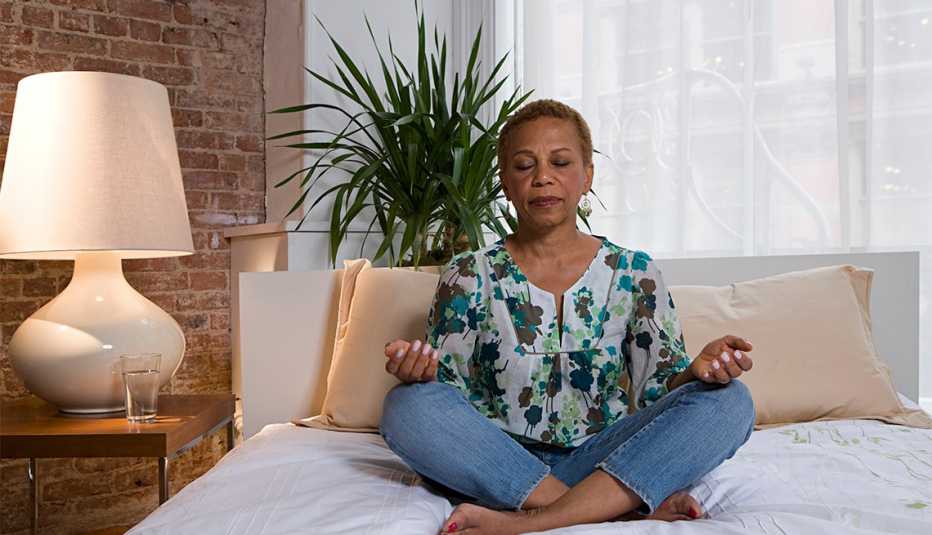Staying Fit
Have you been meditating lately? If so, you've got lots of company, as people the world over have embraced the practice to find calm and comfort during the coronavirus pandemic. But if you've tried it and quickly given up, you have a lot of company, meditation experts say.
Many people “notice that they have trouble maintaining a practice even though they go into their meditation habit with a lot of enthusiasm,” says Dan Harris, an ABC News journalist who wrote the best-selling, often humorous 2014 book 10% Happier, after an on-air breakdown spurred him to try meditation. He writes about how challenging it was to embrace the practice and slow his constantly running mind, but he did. And as he puts it, “If it can work for a restless, skeptical newsman, it can work for you.” Just maybe not the first time.


AARP Membership— $12 for your first year when you sign up for Automatic Renewal
Get instant access to members-only products and hundreds of discounts, a free second membership, and a subscription to AARP the Magazine.
"I like to remind people that it's totally natural to fall off the wagon and you can start again,” says Harris, who created a Ten Percent Happier app and podcast. “You just need to approach this whole endeavor with a sense of experimentation and exploration."
Many novice meditators may need that kind of encouragement right around now. The Ten Percent app saw a doubling of new users early in the pandemic. Headspace, another popular meditation app, reported similar growth. And meditation was already gaining in popularity: The share of U.S. adults who said they meditated in the previous year rose from 4 percent to 14 percent between 2012 and 2017, according to the U.S. Centers for Disease Control and Prevention.
There are many kinds of meditation, meant to induce mental states ranging from spiritual enlightenment to loving kindness. But the most widely practiced types are broadly labeled “mindfulness meditation.” The basics: You focus on your breath, the sounds around you or some other anchor while you let your thoughts and other distractions come and go, without judgment.
That mental exercise is like a “flight simulator” for life, says Ralph De La Rosa, a meditation teacher and psychotherapist who is the author of Don't Tell Me to Relax: Emotional Resilience in the Age of Rage, Feels, and Freak Outs. “If you can focus on keeping your composure while you are being distracted over and over again and maintaining a sense of kindness and centeredness and balance throughout that process, you are cultivating a skill that will serve you well.”
But it's not clear how many people who try meditation stay with it long enough to see its many health benefits (see our story), which studies have shown can include lowered anxiety, depression, insomnia and blood pressure, as well as slower brain aging, according to the National Center for Complementary and Integrative Health.
If you are ready to try meditation for the first time or once again, here are a few obstacles you may face and how to overcome them.



































































